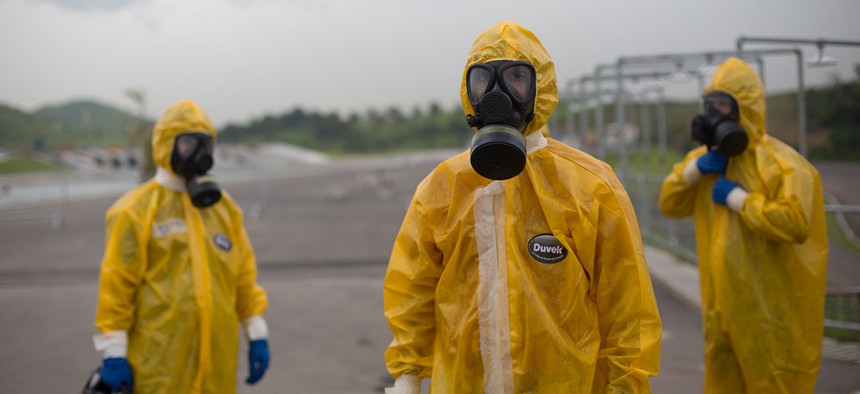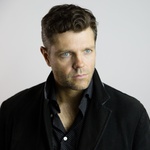
Army soldiers dressed in hazmat suits take part in a security drill at the Deodoro Olympic Park, in Rio de Janeiro, Brazil, Friday, March 11, 2016. Brazilian army personnel took part in the security drill as preparation for the 2016 Olympic Games. Silvia Izquierdo/AP file photo
After London, How Lasers Will Play a Role in Detecting Chemical Attacks Sooner
A new technique can detect trace elements of dangerous chemicals in extremely small doses, a breakthrough of relevance to the horror show playing out in Salisbury, U.K.
The recent assassination attempt against a former Russian double-agent spy just outside of London shows that chemical weapons aren’t just a concern in war zones. They’re invading streets in major cities. Just in time, a new laser technique can detect even trace amounts of chemical weapons in the air long before they show up in blood tests or on the evening news.
Konstantin Vodopyanov, a University of Florida researcher, and his colleagues, have developed a method for finding chemical molecules in extremely low doses, similar to the low doses of the nerve agent Novichok that attackers used against former Russian colonel and double agent Sergei Skripal and his daughter, Yulia, as well as a British police officer responding to the Skripals’ state of emergency.
The method uses two mid-infrared lasers operating at very similar repetition rates, sometimes called dual-comb spectroscopy to essentially sweep the air. Chemical molecules vibrate at optical frequencies as distinct as a fingerprint. When the infrared laser encounters specific molecules, the vibrations affect those frequencies of the laser that are in resonance with the molecular vibrations in a way that speaks to exactly what sort of molecule, thus chemical, is causing the disruption. Vodopyanov’s discovery is in the family of what’s known as dual-comb spectroscopy, dual here meaning with two lasers and spectroscopy referring to the study of how matter and radiation interact. Their paper was published this week in the journal Nature Photonics.
The U.S. military and other national security outfits have been looking to deploy lasers for chemical weapons detection for years. But Vodopyanov’s breakthrough represents an important leap forward in detecting chemical agents in smaller amounts, faster, and easier. The technique is sensitive enough to detect some chemicals at one part per billion. That would be like detecting a single drop of some chemical in a 12,000 gallon tank, or so. Right now the laser is about one square meter in size, but, says Vodopyanov, it could be made much smaller.
And yes, you could use it detect Novichok, he says, but “we need to know the spectral signature of Novichok (like, e.g., spectral signatures for sarin... that are known.)”
Exactly where and when the victims were poisoned keeps changing. Authorities in the Skripal case reportedly now believe that the attackers poisoned Skirpal at home. But a week ago, the working theory held that someone had put an aerosolized version of Novichok in the ventilation system of Skripal’s BMW 320D. Prior that, detectives told the British Telegram newspaper that they believed that someone had put the chemical in Yulia’s luggage before she left Russia to go to the United Kingdom. The theory seemed to move depending on where detectives were finding new traces of the nerve agent. Observing chemical attacks as early as possible is essential to not only limit their spread but also to cut down on bad theories and investigatory dead ends.
Both the British and U.S. governments have said that the likely culprit is the government of Vladimir Putin, a charge the Russian government has denied. Vodopyanov said scientists or possibly emergency crews “potentially” could use his technique to detect a chemical’s source (presuming you had spectroscopic data linking a particular chemical to a specific point of origin) but that he had not yet tried that.
“Our … platform can be used in various fields, such as medical breath analysis, study of the chemical reaction dynamics, atmospheric science, and in the search for traces of life in interplanetary missions” the authors said.
NEXT STORY: Regulating Facebook Won’t Prevent Data Breaches







